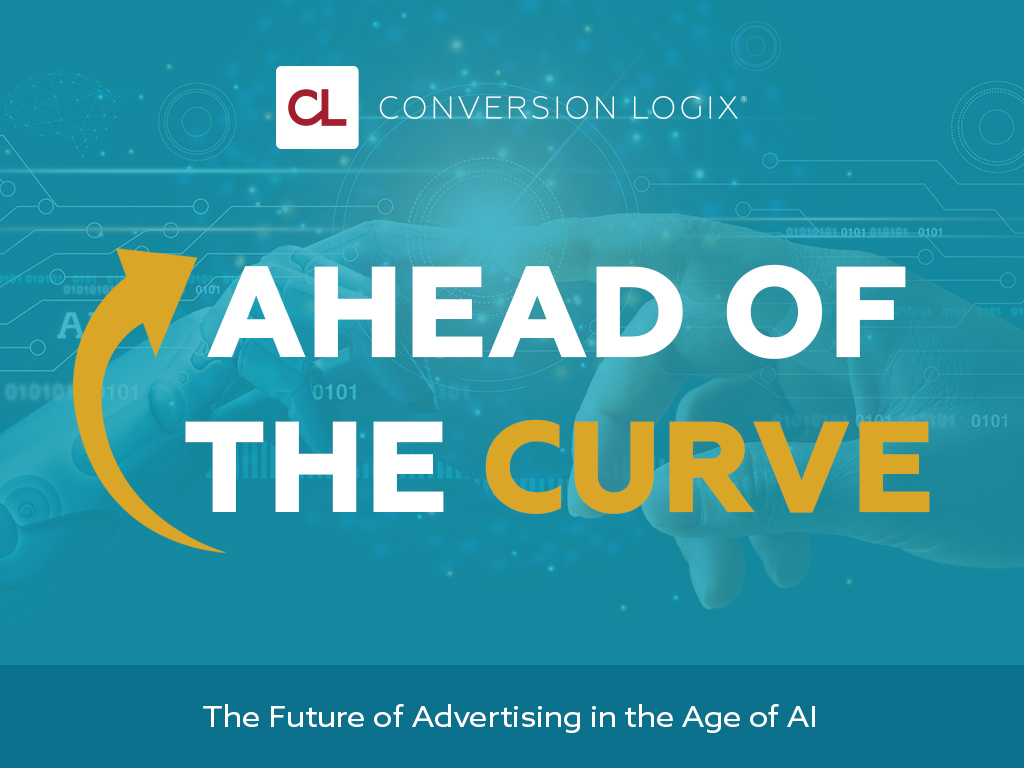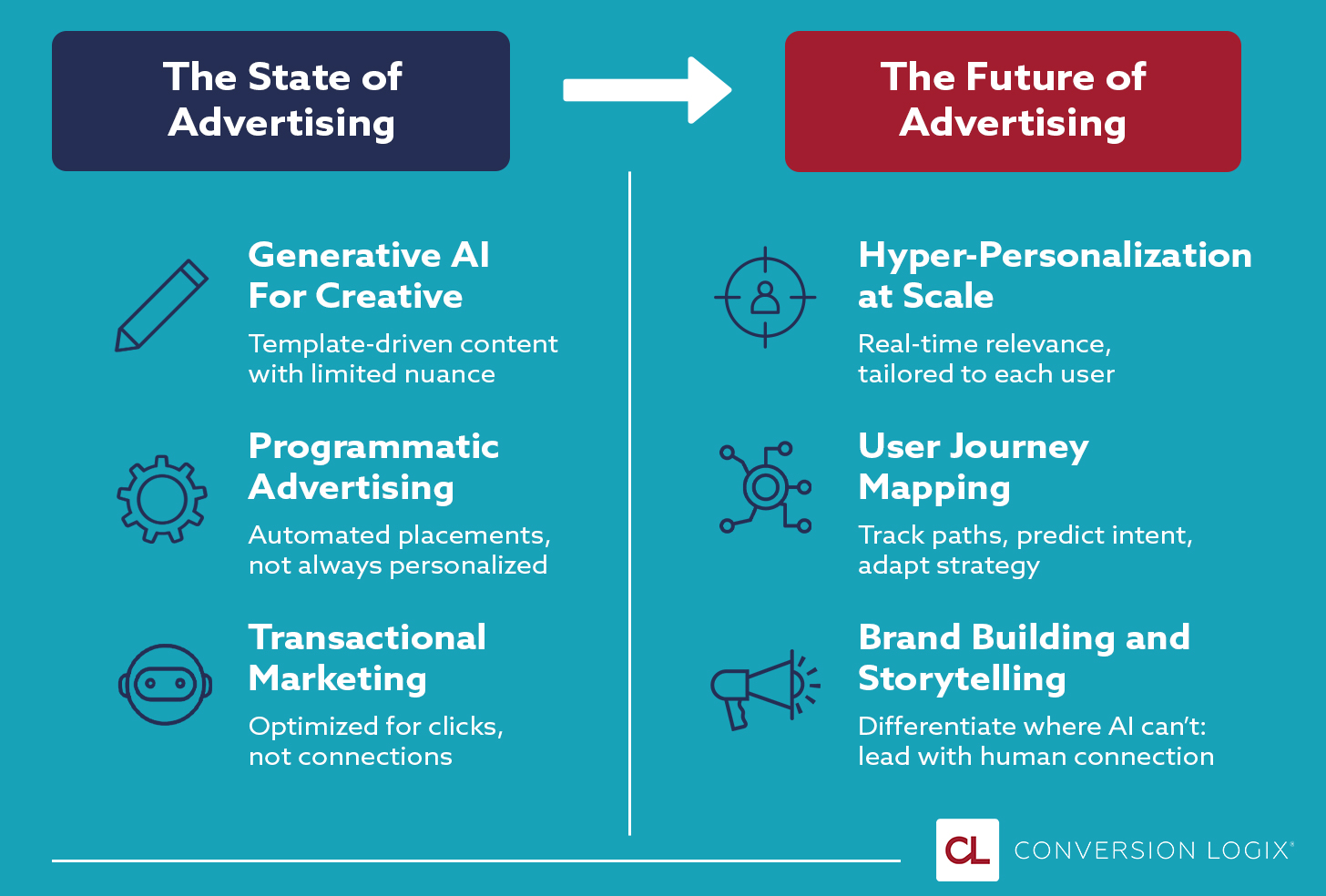Ahead of the Curve: The Future of Advertising in the Age of AI
- 22 July 2025

As AI continues to reshape how ads are created, delivered, and optimized, marketers need to rethink what a modern AI advertising strategy really looks like.
For our latest Ahead of the Curve interview, we sat down with Martin Stein, our Chief Analytics Officer, to talk about the future of advertising in the era of generative and predictive AI. We covered everything from evolving consumer behavior and AI’s growing role in creative and targeting to what marketers need to prioritize as traditional tactics start to fall short.
How is AI impacting the advertising industry right now?
The popularity of generative AI is already transforming the way we approach creative and copywriting.
We’re also seeing big moves in the transactional side of the marketing funnel. For example, Amazon launched a bot called Rufus that helps users shopping on their website add items to their cart. Google’s Shopping Graph is designed to find products you’re likely to want proactively.
We saw how brands like Netflix and Spotify used AI for content recommendations and how that changed consumer expectations in the media industry. Similarly, these new co-piloted shopping experiences are likely to shift the way consumers discover and buy products online. This will likely lead to more personalized advertisements and specials curated by AI at the bottom of the funnel.
How do you see consumer behavior evolving in the next 3–5 years?
The way people search and shop is going to change dramatically. AI-powered search tools will store and reference your preferences, intentions, and previous questions. Chat GPT searches are already being indexed by Bing. Consumers will ask many more questions to determine if a product or service is a fit, and expect more specific and tailored brand experiences.
For high-stakes decisions—like choosing a senior living community for a loved one or deciding on a new apartment—consumers will continue to rely on brand trust and human endorsement. AI may guide the transaction, but emotion, reputation, and values will still guide the decision. People will turn to online reviews and their network to seek out brands they believe fit their values, interests, and lifestyle.
As AI takes over more mid- and lower-funnel functions—answering product questions, making recommendations, guiding transactions—marketers will be called to lean into what humans do best. Emotional storytelling, value-driven messaging, and brand building at the top of the funnel will become the new battleground for differentiation. In other words, the more automated the funnel becomes, the more human the top of the funnel must be.
What does this mean for advertising strategy?
I think advertisers will shift away from broad, impersonal campaigns and toward automated, hypertargeted campaigns that adapt to where someone is in the funnel and deliver the right creative, offer, or message based on each consumer’s moment in the journey—whether it’s answering a question, validating a choice, or reinforcing a value.
Instead of one campaign targeting hundreds of thousands, marketers will run dozens of parallel campaigns tailored to micro-audiences, each one timed and tailored to individual needs and behaviors.
But no single marketer can scale that level of personalization manually. We’ll need systems that can connect generative AI (on the creative side) with predictive AI (on the targeting side). That’s the only way to deliver dozens of ads simultaneously and minimize waste.

How can brands get ahead of these changes?
Most of the attribution models marketers are using today are still based on click-based models and snapshots: first touch, last touch, channel-specific views. That’s no longer enough. Real customer journeys are longer, richer, and multi-channel.
To scale hyperpersonalization, we will need comprehensive customer journey graphs to identify the combination of digital touchpoints and creatives prospects engage with. Predictive AI can then model which touchpoints drive conversions and help marketers deliver the most effective mix of ads to each prospect.
This is what makes our Unified Attribution reporting so valuable—it helps marketers map journeys, recommend optimizations, and allocate budgets more effectively. It also accounts for impression-level influence—especially important in awareness and upper-funnel campaigns.
With tools like ours, marketers can go beyond correlation and begin to model cause and inference—asking not just what happened, but why. It’s this deeper understanding of the journey, from first impression to final decision, that will enable brands to thrive in an AI-powered advertising landscape where personalization and timing are everything.
And as search becomes increasingly AI-driven, brands will need to ensure they’re discoverable through structured, high-quality content. Those who focus now on optimizing their websites with Q&A formats, backlinks, reviews, and social proof will be in a stronger position as AI-based search and shopping channels mature.
Final Thoughts
As advertising enters the age of AI, the rules are changing. Success won’t come from shouting louder, but rather from knowing more, predicting better, and showing up at the right time with the right message. Brands that embrace the shift from generic to relevant, from manual to intelligent, will have the edge. This is what defines a future-ready AI advertising strategy.
Want to see how our attribution and predictive tools are evolving? Subscribe for updates on Unified Attribution v2, launching this fall.
Schedule a Call